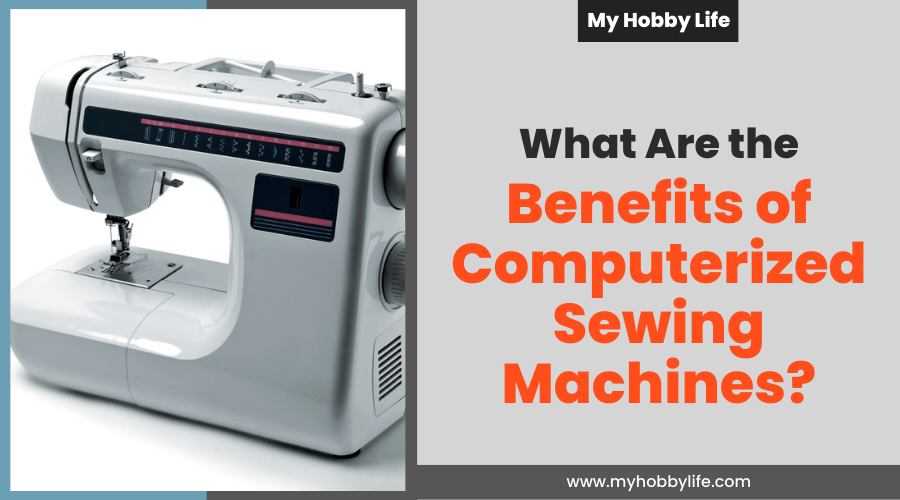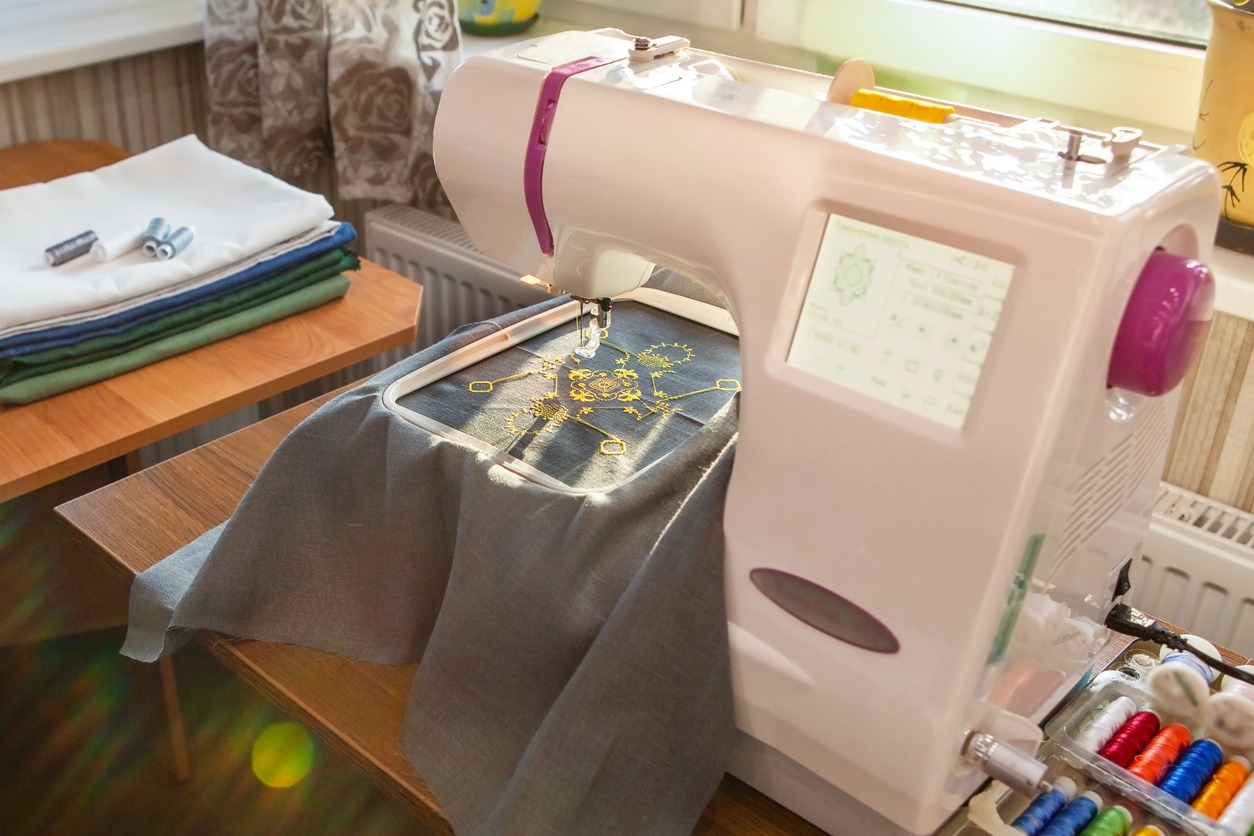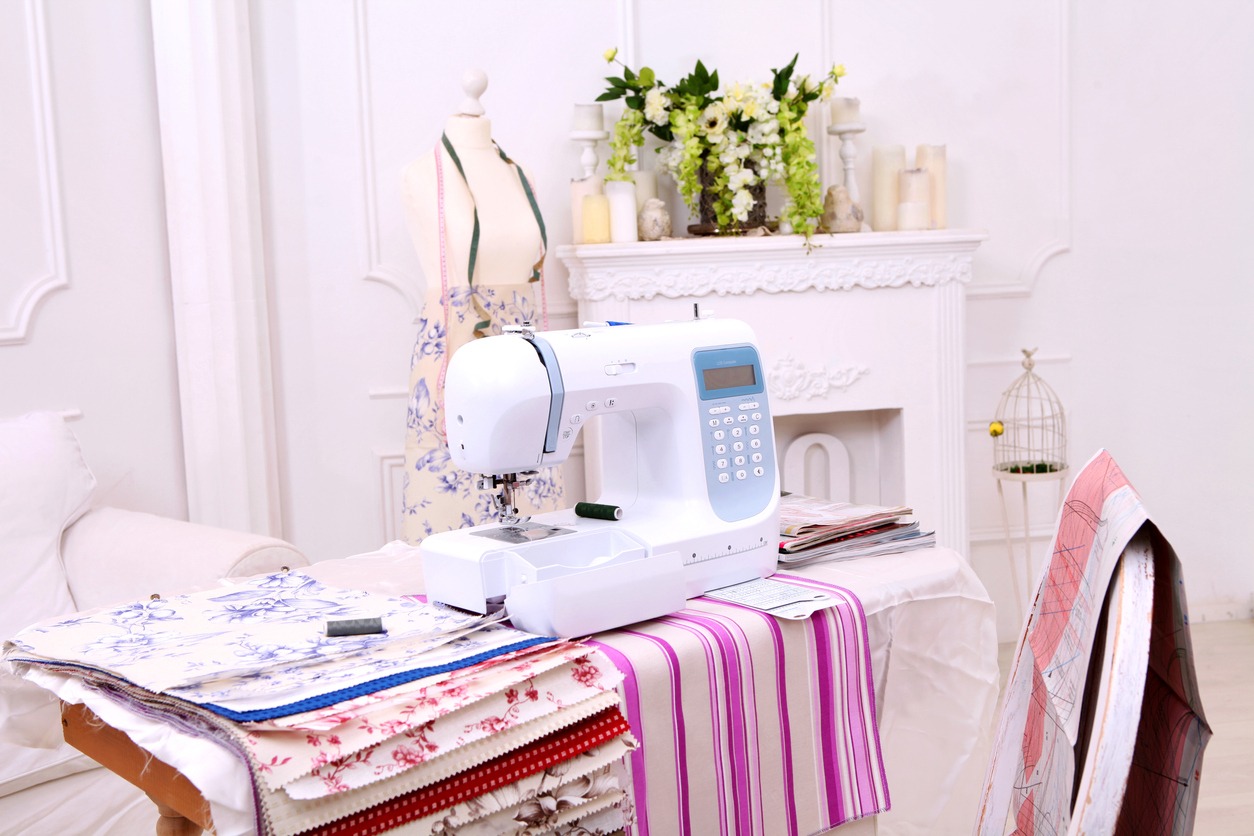In this era of modernization and automation, even simple household appliances are upgraded to make everyday household tasks faster and more efficient – and maybe even more enjoyable. Sewing machines are one of them.
From mechanical sewing machines of the past, they have jumped to electronic to computerized sewing machines.
Computerized sewing machines are developed to enhance and refine the sewing experience as they are equipped with the latest technology and various built-in stitching options.
Computerized sewing machines typically cost much more than mechanical and electronic sewing machines. However, because of the amazing features and convenience they offer, investing in them can be worth every penny. In case you’re wondering, “why are they called “computerized sewing machines”? As the name suggests, computerized sewing machines have built-in software that controls all their functions.
Here are some of the enhanced capabilities of a computerized sewing machine:
- Several pre-programmed stitching styles
- Ability to save various patterns on a memory card or internal memory.
- Connectivity to PC and laptop for obtaining or transferring data, such as patterns.
- LCD screen for displaying details regarding stitches, etc.
Features to be considered before buying a computerized sewing machine
Computerized sewing machines can be more complex than their mechanical or electronic counterparts. They’re also significantly more expensive. So, you can say that computerized sewing machines are quite an investment.
So, before heading to a store, whether online or the traditional store near you, consider the key features of a computerized sewing machine.
Automated computerized options
Most sewing machines today have some degree of computer intelligence in them already. Some common features include speed control, automatic needle threading, and setting the thread tension, etc. Such tasks are some of the most difficult or tedious in sewing, so it makes sense why they are automated.
Here are some of the more advanced options to look for:
- Programmable embroidery patterns
- Programmable stitch patterns
- Programmable monogramming
- Automatic seams setup
- Automatic rolled hems setup
Built-in needle threader
We all know that the thread is one of the essential sewing tools. Without the thread, we obviously cannot sew, right? However, threading a sewing machine can be difficult and frustrating.
But here’s the good news – computerized sewing machines have a built-in needle threader. This feature is particularly helpful for people who suffer from poor eyesight or are just learning to sew. Even people with normal eyesight can find the built-in needle threader of computerized sewing machine extremely useful, as it will make sewing fast and hassle-free.
Drop-in bobbin
A poorly designed bobbin system is another issue that can cause frustration. Some machines require you to take the case off and remove the bobbin casing to reach the bobbin and see if it’s running out of thread.
On the other hand, a top-loading bobbin is a great option to save yourself from such hassle and frustration as it enables the bobbin to pop out and drop in place.
Free arm capability
The free arm allows you to easily sew narrow garment pieces, such as pant hems and sleeves. This feature is beneficial to both beginner and expert sewists.
Foot pedal
Sewing machines, especially computerized ones, typically come with a stable foot pedal. Foot pedals have a decent size to accommodate your foot easily. Another, you will want one with an anti-slip grip to prevent any inconvenience.
Adjustable tension
Several threads and fabrics require variable tension to achieve desirable results. Hence, the tension should be adjustable according to the user’s requirements or preferences. This feature is present in almost all top-of-the-line sewing machines. You may not find adjustable tension in cheaper or earlier sewing machines.
Fabric feed
A larger feed cavity makes the stitching of larger swaths of fabric much simpler and smoother.
Light
Sewing machine manufacturers understand the importance of a well-lit work area, making the process easier and less frustrating. This is the reason why computerized sewing machines come with a light to illuminate the sewing project you’re working on.
Noise
An average sewing machine has a noise level ranging from 66 to 80 decibels. On the other hand, a typically loud conversation goes around 70 decibels, while the noise of heavy traffic is about 80 decibels.
A sewing machine that produces a somewhat loud and grating sound when running can be annoying and may distract you from focusing on work. So, if you’re planning to do a lot of sewing for long hours, then choose a low-noise sewing machine.
Flywheel
Some computerized sewing machines come with a flywheel recessed, making the machine hard to grip.
Some more important things to remember
- First things first – you need to decide where you stand and what your requirements are. Are you a beginner or an expert sewist? What are you going to stitch most often? Do you sew pieces of clothing, crafts, drapes, or soft furnishings in your house?
- Another concern is the price. If a brand or model has different pricing than the others, you should look at their features. You must first ascertain whether you need all the machine’s features (such as the different types of built-in stitches) or choose only the features you know you’ll use the most. You can find several models with various price tags, from beginner to expert.
- Also, consider after-sales service, including warranties, repair options, etc. It will benefit you in the long run.
What’s good in owning a computerized sewing machine? A lot:
- Convenience and time efficiency
- Various stitching options
- Automation
- Display screen
- Memorizing and saving stitches and patterns
- Connectivity
- Speed (and speed control)
Read the separate article that details all the benefits of owning a computerized sewing machine.
Conclusion
Like many other things, sewing machines have become increasingly enhanced and sophisticated over the years. This enables efficiency and creativity to come out in ways we never even thought were conceivable before.
From embroidery to intricate pattern designs, today’s sewing machines can do complex tasks, especially when making fashionable clothes. Computerized sewing machines have left the prior versions in the dust as they take sewing to another level. It can be intimidating to beginner sewists or long-time users of traditional sewing machines. But if they’re willing to learn how to operate a computerized sewing machine, they will eventually find sewing much easier and even more fun, leading to more productive sewing tasks.


